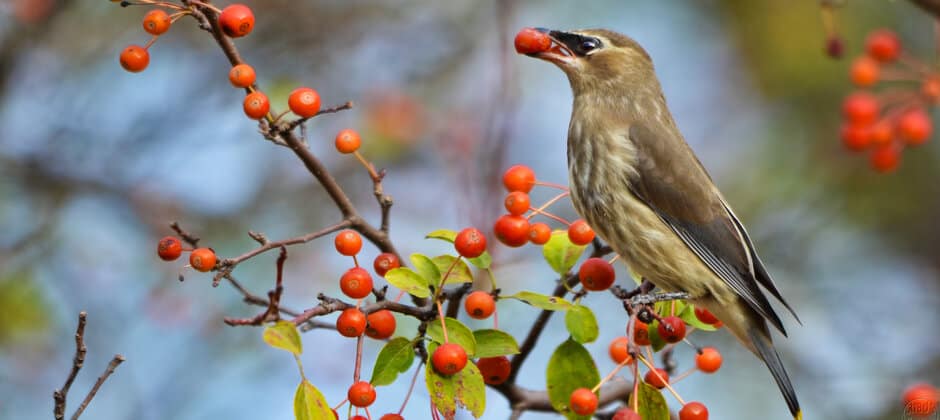Share this article
Here’s what’s happening in the North Central Section: Part 4
Below is a summary of recent student chapter activities within the North Central Section of The Wildlife Society, which was included in the section’s Spring 2021 newsletter. The newsletter includes updates from the Southern Illinois University, University of Minnesota Crookston and University of Wisconsin-Stevens Point Student Chapters of The Wildlife Society. Photos highlighting student chapter activities are also included in the section’s Spring 2021 newsletter.
Student Chapter Reports:
Southern Illinois University Student Chapter of The Wildlife Society
The Southern Illinois University Student Chapter of TWS has worked diligently to stay active, while also staying safe and complying with COVID-19 guidelines. Throughout the 2020-2021 school year, they have continued to hold hybrid and virtual meetings that allow members to network with and learn from various wildlife professionals, graduate students and professors. They have also encouraged members to volunteer in the local community. To support these efforts, the student chapter adopted a local street through the local non-profit organization Keep Carbondale Beautiful and completed monthly litter pickups. To conclude the school year, the chapter recently held its officer elections. Their retiring officer team consisted of the president: Taylor Miller, the vice president: Sarah Doris and the secretary-treasurer: Jacob Yetter. The student chapter’s incoming officer team for the 2021-2022 school year consists of the president: Claire Morrical, the vice president: Tony Easton and the secretary-treasurer: Morgan Lybarger. The incoming student chapter officer team has many plans for the upcoming school year to increase member participation and training opportunities.
University of Minnesota Crookston Student Chapter of The Wildlife Society
The University of Minnesota Crookston Student Chapter of TWS has struggled a bit during the COVID-19 pandemic, but has also seen some silver linings. Their meetings have been held virtually as well as an occasional in-person but, socially distanced, session. They collaborated with the university’s Natural Resources Club to host five Career Advice From Experts, or CAFE, talks where the student chapter members connected remotely via Zoom with program graduates working in the field on topics ranging from wetland management to becoming a smokejumper, which are trained wildland firefighters that are the first responders for remote wildland fires. This is a great example of a silver lining from COVID, as the chapter will continue this practice in future years. The student chapter participated in three outdoor fieldwork events this spring: a brushland management day where two dozen members used hand tools to fell tamarack on a wet brushland to keep the landscape open, eight members installed or maintained 70 bluebird boxes at a local national wildlife refuge, and a dozen members planted trees on a nearby national forest. The chapter is planning fall term activities with the hope that their experience will return to something near pre-pandemic practices.
University of Wisconsin, Stevens Point Student Chapter of The Wildlife Society
The 2020-2021 school year has been challenging, to say the least, for the University of Wisconsin, Stevens Point Student Chapter of TWS. With COVID-19 restrictions, they have been unable to conduct their weekly meetings in person, but that did not stop them from being an active student chapter. Weekly membership meetings took place over Zoom with active participation and attendance of up to 100 participants at times. At these meetings, the chapter encouraged interaction between members by having Quiz Bowl questions, mystery wildlife species and a chat box where students could ask and discuss questions.
Outside of their Zoom meetings, students have still been in the field conducting many of their student research projects. The Flying Squirrel Project had its best trapping season to date this fall, capturing eight individuals in Schmeeckle Reserve. The Woodpecker Project had a lot of success despite not being able to stay overnight at Sandhill Wildlife Area. Small groups of dedicated students woke up at 4:45 a.m. to make the drive to Sandhill where they trapped and banded whitebreasted nuthatches as well as downy, hairy and red-bellied woodpeckers. As part of the Adopt a Wildlife Area Project, chapter members used chainsaws and brush saws to create better grassland habitat at Buena Vista Grasslands.
This past year, student chapter members also attended the TWS Annual conference, the Midwest Fish and Wildlife Conference and the Wisconsin Chapter of TWS meeting. With lower costs of registration, the chapter was able to sponsor more students than usual to attend virtually: six students were sponsored for nationals, 16 for the Midwest, and another seven for the state meeting.
To continue providing a wildlife educational experience to the nearby schools, the student chapter’s education coordinator initiated Project WildLIVE. The students have been taking behind-the-scenes videos and photographs while conducting research projects. Project WildLIVE uses these media to create short, educational videos to distribute to schools and other educators in the area. After creating five videos, Project WildLive has received great feedback, and the student chapter will continue to make these videos to help educate the public about wildlife.
Finally, the student chapter has decided to take an active role in creating a place where everyone is welcome. They are happy to announce the formation of The Wildlife Society Inclusivity, Diversity and Equity (T.I.D.E.) Student Working Group. In the months and years ahead, T.I.D.E. will work toward creating a more diverse society and providing opportunities for open discussions. While this year was not what anyone had envisioned, the work and dedication of students and officers alike ensured that The Wildlife Society did not just survive COVID-19, but thrived during it. When they can finally gather in person again, the student chapter will be stronger than ever.
Header Image: A cedar waxwing eating a berry from a tree. Credit: Chad Horwedel








